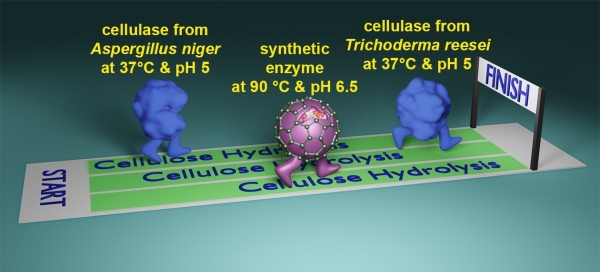Yan Zhao gestured toward the trees outside his campus window on a rainy afternoon.
Yan Zhao gestured toward the trees outside his campus window on a rainy afternoon.
The professor of chemistry at Iowa State University is developing new synthetic catalysts to break down cellulose, the plant fibers that make those trees tall and strong.
“Cellulose is built to last – a tree doesn’t just disappear after rain,” Zhao said. “Cellulose is a huge challenge to break down.”
Zhao thinks he has an idea and a technology that can get the job done, making plant biomass a practical source of sugars that can be converted to many applications, including fuels and chemicals.
Learning from Mother Nature
The synthetic catalysts Zhao and his research group are developing are like super enzymes, able to break down cellulose like their natural counterparts, but in more extreme environments and after being recycled over and over.
“We’re taking our inspiration from biology,” Zhao said. “We’re trying to duplicate the features of natural enzymes. And so far, we have good results.”
Enzymes are natural proteins that act as catalysts, regulating the chemical reactions that keep biological processes going and living beings functioning. Enzymes, for example, catalyze cell metabolism, including breaking down food for digestion.
Read more at Iowa State University
Illustration: In the race to break down cellulose, synthetic catalysts are now midway between two natural enzymes. Credit: Yan Zhao.






